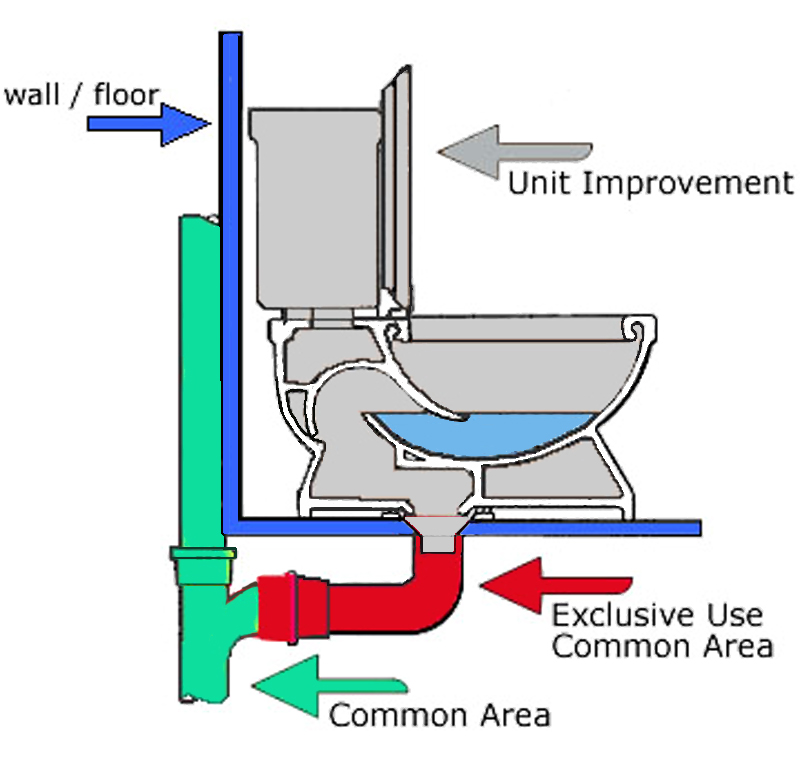QUESTION: The drain line under my toilet, located in the common area under my floor, leaked into the unit below. Who is responsible for fixing the leak?
ANSWER: It depends on your CC&Rs. Allocating responsibility for repairs continues to be a problem for many associations because most CC&Rs offer little help in resolving the problem. Some help can be found in Civil Code § 4775(a), which states that unless otherwise provided in the declaration (CC&Rs):
(1) ...the association is responsible for repairing, replacing, and maintaining the common area.
(2) ...the owner ...is responsible for repairing, replacing, and maintaining that separate interest.
(3) Unless otherwise provided in the declaration ...the owner ...is responsible for maintaining the exclusive use common area appurtenant to that separate interest and the association is responsible for repairing and replacing the exclusive use common area.
What is "exclusive use common area"? The illustration below will answer the question.

Unit Improvements. Plumbing fixtures, such as a toilet, are improvements to a condominium. In other words, toilets are contained within the air space of the unit, are part of the unit, and are owned by the owner of the condominium. Accordingly, the owner, not the association, is responsible for maintaining their toilets. If the float in the toilet tank gets stuck, causing the toilet to overflow and damage the common areas, the association is responsible for repairing the common areas, but the owner (or the owner's insurance company) is ultimately responsible for paying for the repairs.
Common Area. The main drain line (in green) is considered common area because it services multiple units. This is the association's responsibility to maintain. The wall and floor (in blue) are also common areas the association is responsible for maintaining. However, the finished surfaces on the walls and floors, such as paint, wallpaper, carpet, linoleum, and tile, are the owner's responsibility to maintain. If the common areas are damaged, who pays for the damage after the association repairs the common areas ultimately depends on who caused the damage.
Exclusive Use Common Area. The wax ring under the toilet and the drain line (in red) are "exclusive use common area" because they exclusively service the owner's toilet. As such, the owner is responsible (depending on your CC&Rs) for maintaining the wax ring and exclusive use drain line even though they are located in the common area. Unfortunately, many CC&Rs are silent when it comes to exclusive use common areas.
Recommendation: To avoid conflict and costly litigation, associations should amend their CC&Rs to clearly define maintenance responsibilities for their exclusive use common areas. At a bare minimum, boards should adopt maintenance policies in their Rules and Regulations.
ASSISTANCE: Associations needing legal assistance can contact us. To stay current with issues affecting community associations, subscribe to the Davis-Stirling Newsletter.